Let’s focus today on the crafty G.I. Joes from the American 2nd Infantry Division, which went right through “hedgerow hell” to come up with new infantry tactics.
ORIGINS
The original 2nd Infantry Division was formed in France, in 1917, as part of the American Expeditionary Force. It fought in the Aisne, during the battle of Saint-Mihiel, on the Argonne, … where it first made use of its insignia, still used to the day: the Indianhead.
But unlike most American units, it wasn’t disbanded at the end of WW1, and remained active during the Interwar to be used as a testbed for new concepts, such as anti-tank warfare. After Pearl Harbor, in December 1941, Indianhead intensified its training, before being shipped to the UK in early 1943 to prepare for the invasion.
D-DAY … +1
Indianhead didn’t storm the beach on D-Day, but instead, landed at Omaha the next day, June 7th, with Major General Walter M. Robertson in command, passing through the positions of the 1st & 29th Infantry Divisions, which held the beaches they had so dearly paid for. Spearheading the advance South, 2nd Infantry Division liberated villages & crossed rivers, closing on its objective: the major roads hub at Saint-Lô. But the German resistance was stiffening, and Indianhead soon ran into the (in)famous bocage country: on June 12th, it had reached the slopes of a small height defended by a battalion of German paratroopers from 3. Fallschirmjäger-Division.
Although unremarkable, this height, Hill 192, gave the Germans a good look at the landing beaches, and thus had to be taken. But it was well fortified, the Germans having turned every hedge and fields into a fortress, connected by tunnels. It was considered one of the most heavily fortified strongpoint of the entire First Army sector. From June 12th to 16th, Indianhead stormed the hill, only to be repelled with heavy losses. After three days and around 1.200 casualties, it gave up and took defensive positions on the slopes.
For the next month, Indianhead & Green Devils cohabited on the hill, sometimes occupying each side of the same hedge. While the German paratroopers maintained an aggressive stance, with frequent reconnaissance in force and counter-strikes, the Americans tried to develop new tactics, such as collecting the SMG and carbines from AA gun crews to give them as extra automatic weapons to scout and rifle squads, fitting dozer blades and improvised armor on M4A1 tanks dubbed “Rhinos“, and close coordination with said tanks. Patrols, small forays & local counter-attacks became the everyday life, and local places soon got appropriate nicknames, such as Kraut Corner, Purple Heart Draw, … not forgetting actual names also very fitting, such as Le Calvaire (“The Calvary“) or La Croix-Rouge (“The Red Cross“).

Bocage country today (Photo courtesy of Lead Game Designer S. Hernandez, who went trudging through hedgerows to bring us back accurate pictures 🙂 )
The standstill was broken on July 11th, when Indianhead attacked again. After a WW1-style rolling barrage fired by no less than eight artillery battalions, the 38th Infantry Regiment rushed ahead with Rhino tank in support. Despite the pounding, a few German pockets of resistance managed to inflict heavy losses on the Americans, but couldn’t stop the assault: the hill was finally captured, and immediately fortified with a ring of artillery fire preventing any German counter-attacks.
BRITANNY & THE SIEGE OF BREST
Two weeks later, the German front erupted with Operation Cobra‘s massive air and artillery bombardment. Indianhead advanced in its wake, crossing the Vire on August 15th. But while most Allied troops in Normandy were rushing East toward the Argentan-Chambois sector to seal the Falaise pocket, the VIII Corps, of which 2nd Infantry Division was now part, was sent West to Britanny.
VIII Corps rolled through Britanny, encountering only limited opposition, and linking with the Résistance and SAS teams which had waged a guerilla war with the local German troops to pin them in the peninsula during the battle of Normandy. The Germans had retired into the harbors, which they were determined to hold. Saint-Malo fell quickly, but was sabotaged and was too small to sustain the Allied war effort. The real prize was Brest, a major harbor and a submarine base, which Hitler made sure to be defended: in charge of its defense was Bernhardt Ramcke, a veteran paratrooper from the Afrika Korps and one of Germany’s most decorated WW2 soldier.
Just like in Monte Cassino, the German Fallschirmjäger (from 2. FJ-Division this time) were well entrenched, with ample stocks of ammunition and turned every ruin into a fortress. It took the VIII Corps, with Rangers & even specialized tanks from the British 79th Armored Division (the “Hobart’s Funnies”) in support, and the use of USAAF bunker busting bombs, from August 7th to September 19th to put an end to the German resistance. Brest lied in ruins.
AFTER NORMANDY & BRITANNY
Moved to Belgium, Indianhead entered Germany on October 3rd, 1944, but pulled back in Belgium during the Battle of the Bulge to halt the German offensive. It then resumed its advance in Germany, ending the war in Czechoslovakia.
Brought back in the USA, they were scheduled for deployment in the Pacific but the war ended there before they were shipped. Indianhead then resumed its role as a testbed division for arctic, air transportability, amphibious, and more training.
At the outbreak of the Korean War, 2nd Infantry Division was the first unit shipped to the peninsula directly from the USA and proved instrumental in breaking out of the “Pusan pocket” (which should remind Red Dragon’s fas some souvenir 😉 ). It fought the entire war there and, but for a brief repatriation in the USA in the 1950’s, still has its HQ there today.
THE 2ND INFANTRY DIVISION INGAME
Indianhead is a balanced division, growing in strength from Phase A to C.
A handful of Rangers in Phase A will make life hard for their opponents. They are deadly opponents, doubling as assault engineers, but are too few to be everywhere at once, and lacking resilience. Hence G.I. Joe will have to fill the gaps.
From Phase A, Indianhead can rely on a good selection of fire support vehicle, from Priest DD used as assault guns to the rangers’ own T30 HMC.
In both Phase B & C, Rifles will remain the backbone of the division, with ever increasing artillery and armor support, although the latter is limited to old M4A1, including the field-modified M4A1 Rhino. A pioneer in anti-tank warfare, Indianhead might be wiser to rely on M5 76mm anti-tank guns to get rid of enemy armors, later supplemented with M10A1 tank destroyers.
2nd Infantry Division also offers a wide array of choice when it comes to killing its enemies from afar, with plenty of artillery units, ranging from all types of infantry mortar to 203mm off-map artillery. But of special note is the Xylophone, a Katyusha-type American MLRS: this weapon system was entrusted to the sole Indianhead for field testing during the siege of Brest.

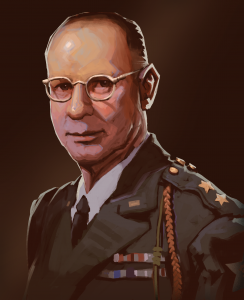
![USA-E-Breakout-8[1]](https://eugensystems.com/wp-content/uploads/2017/04/USA-E-Breakout-81.jpg)
![53999418[1]](https://eugensystems.com/wp-content/uploads/2017/04/539994181.jpg)
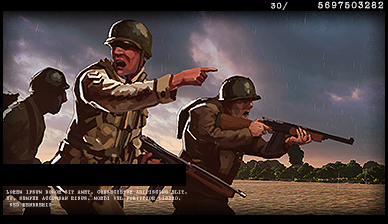

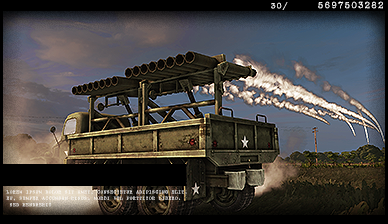

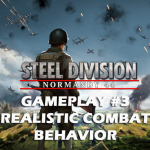
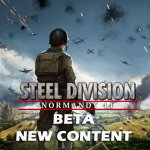
Carolus
April 12, 2017 at 10:36 pmDid you say Katyusha?
I’ve already bought the game so I’m in but I was just wondering.
Did you say Katyusha? 😉
[EUG]MadMat
April 12, 2017 at 10:52 pmI said “Katyusha-like” … since they were basically MLRS mounted on trucks. 🙂
http://2.bp.blogspot.com/-jdcWu5MUk70/VW0_AaiHTkI/AAAAAAAAAqY/VRQWMHuUJ_k/s1600/MR3.jpg
Vlad
April 13, 2017 at 12:40 pmHello. I want to buy this game, but is there any hope that (despite the name of the game) will appear DLC on the topic of the Eastern front and of the operation “Bagration”, for example. The fact in the game, as I don’t think there will be no new ideas. Synthesis of Company of Heroes and Wargame: Red Dragon isn’t a very original solution which carries in itself the minimum number of units. And only if the game will be the Eastern front and the Soviet Union, the game can be considered absolutely COMPLETE
Emanuesson
April 13, 2017 at 2:53 pmI don’t think that the Eastern front will make any WW2 RTS-game more “outstanding” or “original”. The very new and innovative thing about Steel divison is the 3-phase gameplay and the high level of historical details (at least for an RTS-game). And I think there is good reason that these two things will provide a lot more fun and diversion compared to Red Dragon or CoH.
Different settings beside the D-Day such as the battle of the bulge, the north african theatre, the eastern or the pacific theatre, that might be added later on with DLCs are just the usual expansion of a working game concept and not very original for any WW2 game in my humble opinion.
Vlad
April 14, 2017 at 10:56 amEveryone loves the games of the Wargheim series for a variety that in the Steel Division: Normandy 44 will not be in a limited number of kinds of factions (countries) and therefore units. Everyone loves the Company of Heroes for the great story and drama that in the Steel Division: Normandy 44 will not be – the mechanics of the game has not changed: ordered units, sent to a greenery massif or building, waiting for the enemy. No sense of battle and lack of diversity due to the fact that there is not and there will be no Soviet army. WHAT’S THE POINT OF THIS GAME?
Ostmark
April 13, 2017 at 12:57 amNext info will be about a German one right? 🙂 Preferably about the non-divisional Schwere Panzer-Abteilung 503 in Normandy 🙂 Königstiger im Angriff!
Tankhunter
April 13, 2017 at 2:42 amSchwere Panzer Abteilung 503 was already confirmed, represented by the King Tigers available to the 21. Panzer.
https://eugensystems.com/steel-division-normandy-44-division-of-the-week-21-panzerdivision/
Derek
April 13, 2017 at 7:14 pm^what he said